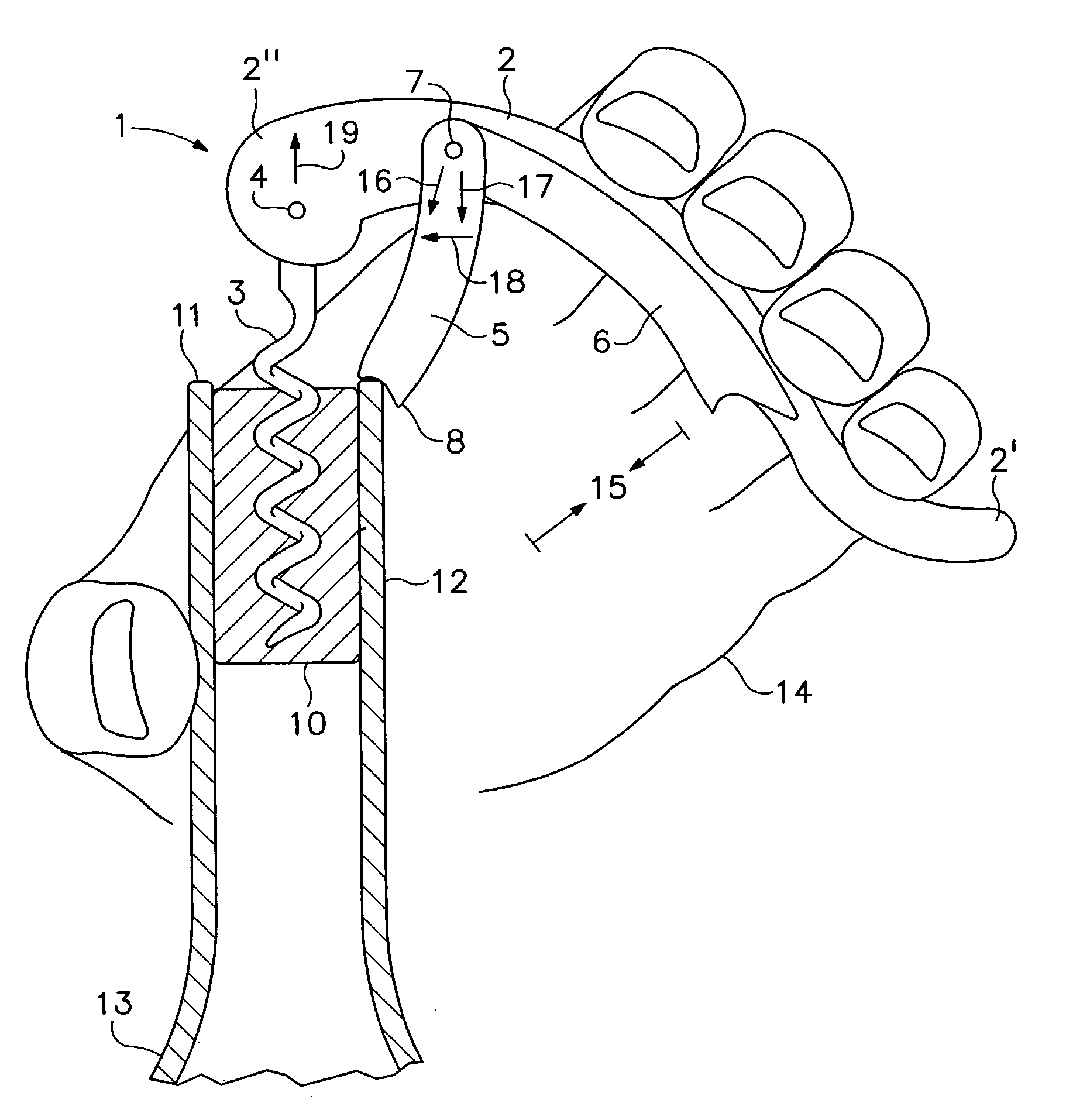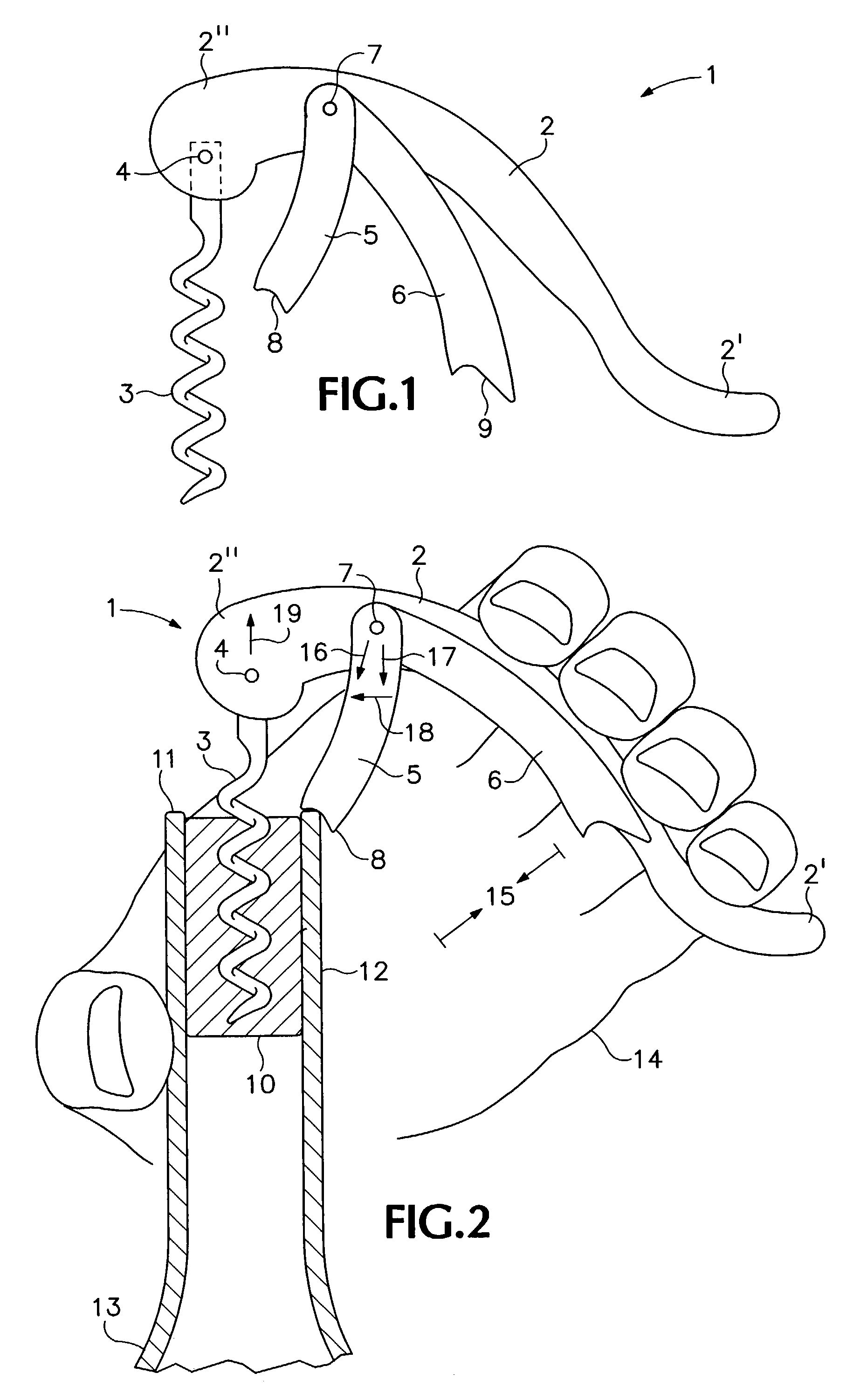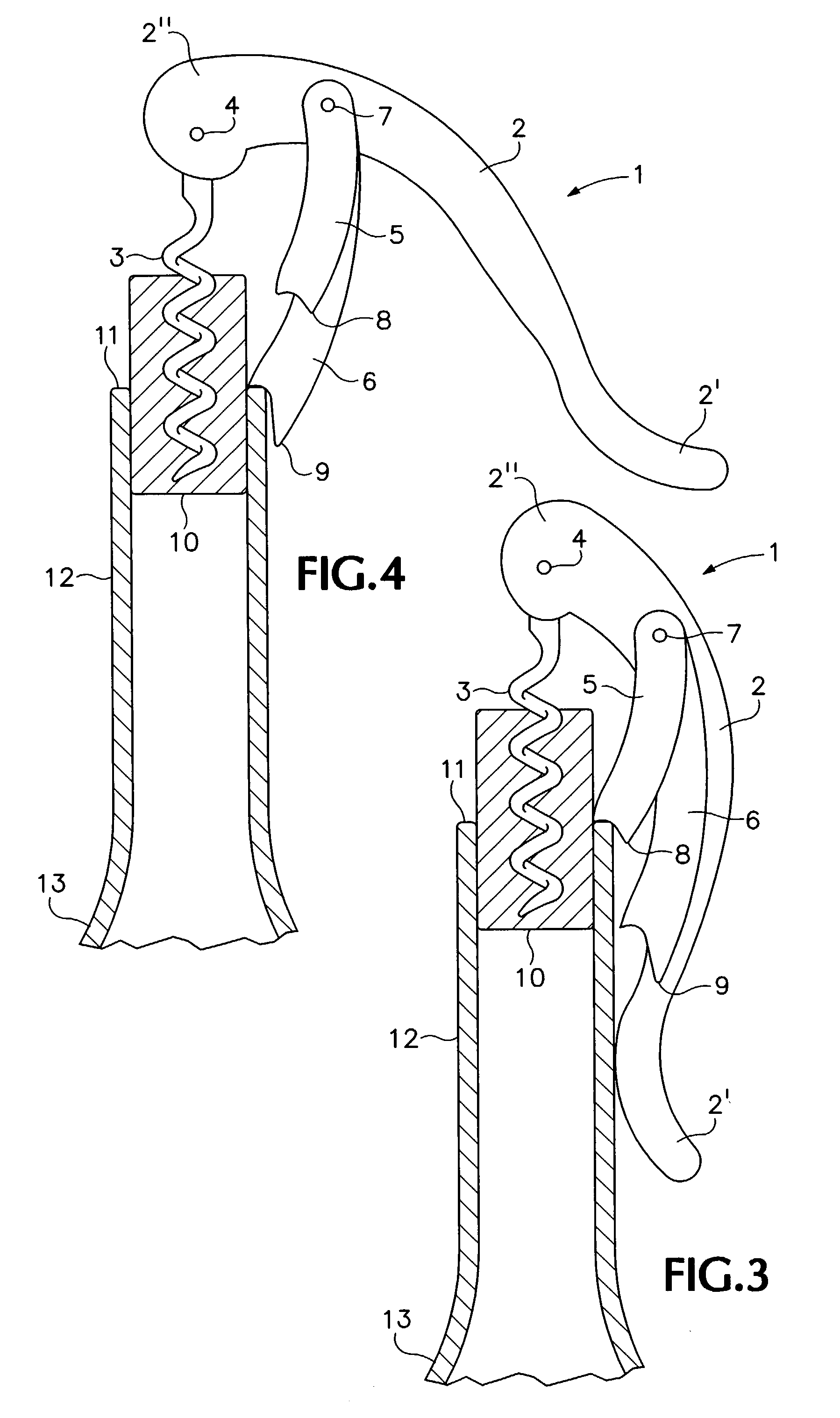Corkscrew for one handed operation
a one-handed operation and corkscrew technology, applied in the field of man-handed corkscrews, to achieve the effect of stable situation, increased leverage, and increased stability in operation
- Summary
- Abstract
- Description
- Claims
- Application Information
AI Technical Summary
Benefits of technology
Problems solved by technology
Method used
Image
Examples
Embodiment Construction
[0046]FIG. 1 is a side view of corkscrew (1) embodying features of the present invention. An elongated lever (2) has a shape configured to bring its free end (2′) close to the neck (12) of a bottle (13) during use (FIG. 2). A cork-engaging screw (3) is pivotally mounted, by a pivot mount (4), on the opposite screw end (2″) of the lever. A plurality of elongated fulcrums (5) and (6) are pivotally mounted, in this embodiment, by their ends with a common pivotal mount (7), intermediate the ends (2′) and (2″) of the lever (2) at a predetermined distance from pivot mount (4). Fulcrums (5) and (6) terminate in free ends (8) and (9) respectively that are configured to seat securely on the lip (11) of the neck (12) of the bottle (13) during operation of the corkscrew (1) (FIG. 2).
[0047]FIG. 2 shows the corkscrew apparatus with the screw (3) entirely engaged within a normal length cork (10) that is fully inserted within a bottle neck (12). When shorter fulcrum (5) is applied to the bottle li...
PUM
 Login to View More
Login to View More Abstract
Description
Claims
Application Information
 Login to View More
Login to View More - R&D
- Intellectual Property
- Life Sciences
- Materials
- Tech Scout
- Unparalleled Data Quality
- Higher Quality Content
- 60% Fewer Hallucinations
Browse by: Latest US Patents, China's latest patents, Technical Efficacy Thesaurus, Application Domain, Technology Topic, Popular Technical Reports.
© 2025 PatSnap. All rights reserved.Legal|Privacy policy|Modern Slavery Act Transparency Statement|Sitemap|About US| Contact US: help@patsnap.com



